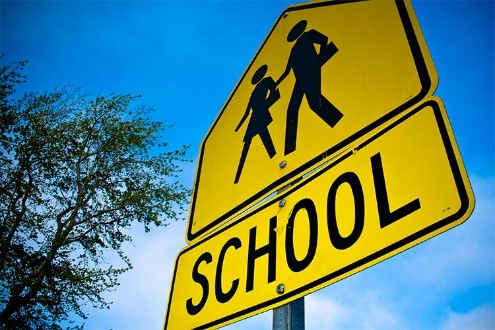Hannah Yang is a law student at NYU School of Law and guest contributor on this blog.
The USDA Food and Nutrition Service’s mission is “to increase food security and reduce hunger.” As part of its mission, it oversees the National School Lunch Program, which provides free or reduced lunch for eligible students while school is in session. The Summer Food Service Program and Seamless Summer Option are schools’ food program options while schools are closed for the summer.
Waivers
The Families First Coronavirus Response Act explicitly gave the Secretary of Agriculture the authority to grant waivers in response to the pandemic. USDA has since issued a series of waivers. Critically, two waivers (general and summer) permitted schools to serve free meals without needing to verify income and collect data from the individual meal recipients. Ordinarily, these forms of “open sites” were only permitted in areas where greater than 50% of the children are from low-income households.
However, these key waivers and the summer-specific programs were set to end in September. After advocacy and pressure, USDA announced on August 31, 2020 that schools could continue providing free meals to all children until the end of 2020, as long as funding permits. The announcement comes as welcome news for the nearly 4000 school programs currently providing free meals across the country. These waivers provide the schools with the necessary flexibility to meet the needs of their communities.
- More schools are able provide free meals, making the program more accessible for children and families.
- Without the waivers, the income cutoff for reduced meals is set at 1.85 the federal poverty level. However, food insecurity is a problem for families with much higher incomes, disproportionately impacting those below 2.5 times the federal poverty level. By providing a need-blind service with fewer administrative hurdles, school meal programs can reduce hunger of all children in their communities.
- This decision infuses federal funding into school districts, which saves schools from resorting to general funds to feed its students. The continued funding will also support other stakeholders in the supply chain, such as farmers who sell their food products to school districts.
Pandemic EBT
The Families First Coronavirus Response Act also permitted USDA to provide emergency supplemental funding to children who qualify for free or reduced price meals. This funding is provided via an EBT card, which reflects a dollar amount. The card allows the cardholder to transfer benefit amounts to a food retailer. Pandemic EBT (or P-EBT) plans are developed by state agencies, to be approved by the USDA. However, these benefits are very limited. Funding is only available during pandemic-related school closures, not during the summer. Additionally, some states were slow to get approved and distribute benefits. It was only on August 13, 2020 that USDA approved of Idaho’s P-EBT plan, the last of the 50 states. Fortunately, states are permitted to issue retroactive benefits. However, delays in approval will delay families from receiving much needed financial support. And without further legislative action, P-EBT funding will end on September 30, 2020.
Looking Forward
The free student meals and P-EBT are critical programs that many families depend on. Advocates have urged USDA to further extend waivers to the end of the school year in 2021, and several representatives are working on legislation that would qualify all students for free lunches for that time period. Still, not all children who qualify are able to access benefits. Not all schools are participating in the service, and transportation to far away distribution sites can be an insurmountable burden for families. The consequences of COVID-19 only serve to exemplify the shortcomings and fragility of our food systems. In addition to these short-term programs, it is critical that our country continues to look to more robust ways to address food insecurity.
One pathway forward is to strengthen SNAP. In July, the USDA announced an increase to SNAP benefits significantly above the past annual average increases. However, the Center for Science in the Public Interest notes that this increase only “reflects a proven increase in costs, and thus is not an actual increase in the spending power from benefits.” While the Center has looked to Congress to improve SNAP, Congress has been unable to agree on legislation. In May, the House passed the HEROES Act expanding SNAP. The Senate declined to do the same in its proposed HEALS Act. Without improvements to SNAP, many families will continue to rely on the free student lunches set to end with 2020. The United States needs to work towards addressing longer-term needs in order to achieve the Food and Nutrition Service’s mission.
For more information on pandemic responses, see the FBLE Backgrounder on COVID-19 Response and Farm Bill Policy.
The views and opinions expressed on the FBLE Blog are those of the authors and do not necessarily reflect the official policy or position of FBLE. While we review posts for accuracy, we cannot guarantee the reliability and completeness of any legal analysis presented; posts on this Blog do not constitute legal advice. If you discover an error, please reach out to contact@farmbilllaw.org.

